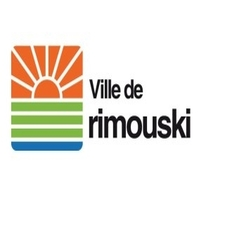Street
Type of resources
Topics
Keywords
Contact for the resource
Provided by
Years
Formats
Representation types
Update frequencies
status
Service types
-
The CRN is based on the road network from the Spatial Data Infrastructure (SDI). Statistics Canada maintains the CRN to support the census and other activities. The relative position of road network features is important for census enumeration and reference purposes; therefore, topological accuracy takes precedence over absolute positional accuracy. The CRN does not contain street information required for route optimization. For example, data on one-way streets, dead-ends and other street obstacles are not included in the CRN. Consequently, this file is not recommended for engineering applications, emergency dispatching services, surveying or legal applications. The road network file contains street arcs with either 'true' address ranges, imputed address ranges, or no address range. Imputed address ranges are not meant to replace true address ranges for any purpose other than address geocoding. Thus, if the files are to be used for computer-aided dispatch or similar purposes (that require an address to be matched to a block or street), it may be necessary to supplement the file with local knowledge by updating existing true addresses and replacing imputed addresses. The limitations of the CRN should be recognized for uses other than the mapping, analysis and retrieval of census data.
-

Mapping of the pavement center of public roads in Quebec City.**This third party metadata element was translated using an automated translation tool (Amazon Translate).**
-

Representation of the administrative arterial network of the City of Montreal from the geobase, as defined by the regulation identifying arterial and local road networks (02-003). The City's arterial network is under the responsibility of the city council. All other streets or roads that belong to the City of Montreal and that do not form the City's arterial network are the responsibility of the borough councils in which they are located.**This third party metadata element was translated using an automated translation tool (Amazon Translate).**
-

Road network of the City of Rimouski. Street segments without address ranges.**This third party metadata element was translated using an automated translation tool (Amazon Translate).**
-

Map of the road network in the City of Longueuil.**This third party metadata element was translated using an automated translation tool (Amazon Translate).**
-

Data set geolocating road signs on Montreal territory. It should be noted that [road signs concerning parking] (/city-of-montreal/parking-on-street-signalisation-currant) are available in a separate set. Additional files provide more details on the descriptions and the codifications of the panels. The images of all the panels are also available.**This third party metadata element was translated using an automated translation tool (Amazon Translate).**
-

Street segment in the City of Repentigny.**This third party metadata element was translated using an automated translation tool (Amazon Translate).**
-

Road network in the territory of the city of Lévis**This third party metadata element was translated using an automated translation tool (Amazon Translate).**
-

Polygonal layer of the road network in the territory of the city of Shawinigan. [Link to the complete Isogeo sheet] (https://open.isogeo.com/s/b6da64af30234cbda2afed3972a5fc3e/Urd8YxfJdWSzGaUmhHFMY60vx14s0/r/bb3634e2a1504d40b5d483fa071dd4df?lock)! [Shawinigan logo] (https://jmap.shawinigan.ca/doc/photos/LogoShawinigan.jpg) **Collection method** From Autocad digital files **Attributs** * `objectid` (`integer`): * `id_troncon` (`integer`): Section ID * `st_area (shape) ** `st_area (shape) `(`double`): Area * `st_length (shape)` (`double`):**This third party metadata element was translated using an automated translation tool (Amazon Translate).**
-

Polyline layer of the road network drawn at the center of each lane on the territory of the city of Shawinigan. ! [Shawinigan logo] (https://jmap.shawinigan.ca/doc/photos/LogoShawinigan.jpg) **Collection method** From Autocad digital files **Attributes** * `objectid` (`integer`): * `id_troncon` (`integer`): Trunk ID * `st_length (shape) `(`double`): * `street_toponymy` (`char`): * `partial_street` (`char`): * `Essential_street` (`char`): * `minimum_street` (`char`): * `balance_street` (`char`): * `sector` (`char`): * `request_for_jmap` (`char`): * `a` (`char`): * `of` (`char`): * `nocivicpairde` (`char`): * `nocivicpaira` (`char`): * `nocivicodde` (`char`): * `nocivicoda` (`char`): * `number_ways` (`smallint`): * `unique_sense` (`char`): * `owner` (`char`): * `functional classification` (`char`): * `typesurface` (`char`): * `typestructure` (`char`): * `bus` (`char`): * `trucking` (`char`): * `area_m2` (`integrate`): * `width_m` (`smallint`): * `draining` (`char`): * `coderives` (`char`): * `rive1dlength_m` (`smallint`): * `rive1slength_m` (`smallint`): * `rive2dlength_m` (`smallint`): * `rive2slength_m` (`smallint`): * `rive1dmaterial` (`char`): * `rive1smaterial` (`char`): * `rive2dmateriau` (`char`): * `rive2smateriau` (`char`): * `rive1dtype` (`char`): * `rive1stype` (`char`): * `rive2dtype` (`char`): * `rive2stype` (`char`): * `vocation` (`char`): * `statusvaluation` (`char`): * `year_origin` (`char`): * `year_reconstruction` (`char`): * `year_resurfacing` (`char`): * `yeare_pulveripavage` (`char`): * `year_origin_estimate` (`char`): * `yeare_planagepavage` (`smallint`): * `paving manager` (`char`): * `yeare_1e_pavage` (`char`): * `notes` (`char`): * `speed` (`smallint`): * `hierarchical_level` (`char`): Hierarchical level For more information, consult the metadata on the Isogeo catalog (OpenCatalog link).**This third party metadata element was translated using an automated translation tool (Amazon Translate).**
 Arctic SDI catalogue
Arctic SDI catalogue